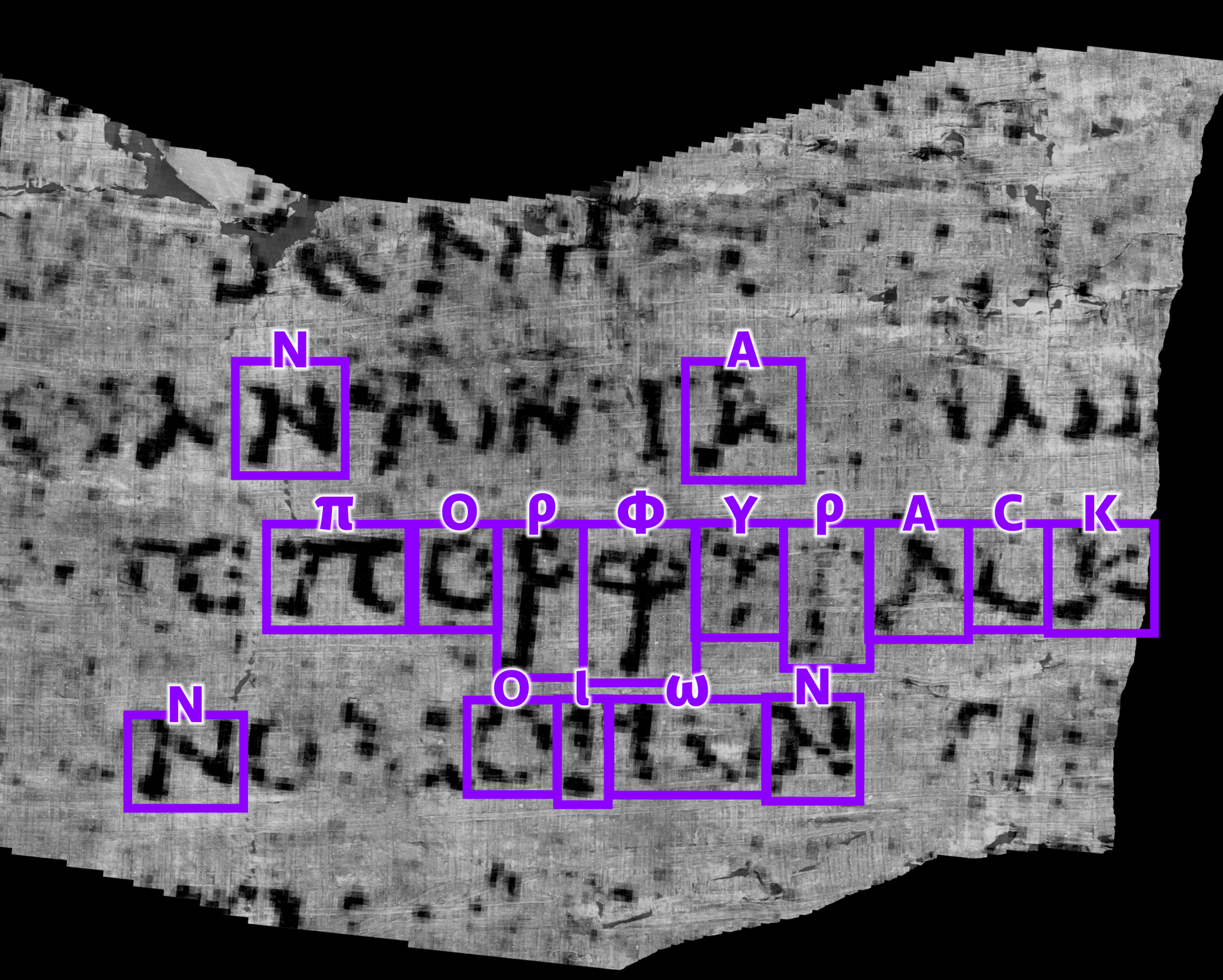https://sputnikglobe.com/20231017/photo-ai-deciphers-text-on-charred-papyrus-scrolls-from-buried-roman-herculaneum-1114270218.html
Photo: AI Deciphers Text on Charred Papyrus Scrolls From Buried Roman Herculaneum
Photo: AI Deciphers Text on Charred Papyrus Scrolls From Buried Roman Herculaneum
Sputnik International
Artificial intelligence has been successfully used to read several lines from a papyrus scroll that was charred by the eruption of Mount Vesuvius in 79 CE.
2023-10-17T21:10+0000
2023-10-17T21:10+0000
2023-10-17T21:06+0000
beyond politics
vesuvius
roman
ancient greece
ai
archaeology
https://cdn1.img.sputnikglobe.com/img/07e4/0a/06/1080688241_0:184:2504:1593_1920x0_80_0_0_f9e7a994901a41b28e18675fde731842.jpg
Located just a few miles from Mount Vesuvius, Herculaneum was destroyed in October 79 after the massive volcano erupted, pouring out tons of ash and pyroclastic rock that also destroyed the much more famous city of Pompeii. However, while the more distant Pompeii was buried in ash by surprise, Herculaneum was evacuated ahead of time and the pyroclastic surge preserved large amounts of organic materials, such as wood and fibers used in construction.Unfortunately, such carbonized materials have the appearance of charcoal, meaning that until recently, any hope of reading scrolls or other items preserved in the blast was distant at best.Farritor’s program was mostly able to identify single letters, potential letters, or fragments of words, but it was able to spell out one entire word: πορϕυρας (porphyras), which is the Greek word for the color purple.“When I saw the first image, I was shocked,” Federica Nicolardi, a papyrologist at the University of Naples in Italy and a member of the academic committee that reviewed Farritor’s findings, said in a news release.The scroll is just one of hundreds found in the remains of Herculaneum, a seaside escape for the wealthy Romans of Neapolis, the ancient ancestor of modern-day Naples. Many of the scrolls are believed to be works by their original authors and unknown in the present day, where most of the texts that have survived since ancient times have been passed down through copies of copies. Some other partially identified scrolls contain works of philosophy by followers of the Greek philosopher Epicurus, who preached a life of moderation in order to tolerate a cruel world in which it was impossible to leave one’s mark.Another is known to be by Philodemus, a little-known thinker to whom the scroll library might have belonged.
https://sputnikglobe.com/20230822/archeologists-uncover-slave-rooms-in-roman-villa-near-pompeii-1112773525.html
vesuvius
Sputnik International
feedback@sputniknews.com
+74956456601
MIA „Rosiya Segodnya“
2023
News
en_EN
Sputnik International
feedback@sputniknews.com
+74956456601
MIA „Rosiya Segodnya“
Sputnik International
feedback@sputniknews.com
+74956456601
MIA „Rosiya Segodnya“
herculaneum; pompeii; vesuvius; papyrus scroll; purple; ai
herculaneum; pompeii; vesuvius; papyrus scroll; purple; ai
Photo: AI Deciphers Text on Charred Papyrus Scrolls From Buried Roman Herculaneum
Artificial intelligence has been successfully used to read several lines from a papyrus scroll that was charred by the eruption of Mount Vesuvius in 79 CE.
Located just a few miles from Mount Vesuvius, Herculaneum was destroyed in October 79 after the massive volcano erupted, pouring out tons of ash and pyroclastic rock that also destroyed the much more famous
city of Pompeii. However, while the more distant Pompeii was buried in ash by surprise,
Herculaneum was evacuated ahead of time and the pyroclastic surge preserved large amounts of organic materials, such as wood and fibers used in construction.
Unfortunately, such carbonized materials have the appearance of charcoal, meaning that until recently, any hope of reading scrolls or other items preserved in the blast was distant at best.
Enter Luke Farritor, a 21-year-old student at the University of Nebraska–Lincoln who devised a machine learning algorithm that has been able to detect several Greek letters on several lines of one papyrus preserved at Herculaneum. Farritor received a $40,000 cash prize from the Vesuvius Challenge, a group set up to encourage such novel tech-based deciphering of the hidden scrolls, after presenting his discovery in August.
Farritor’s program was mostly able to identify single letters, potential letters, or fragments of words, but it was able to spell out one entire word: πορϕυρας (porphyras), which is the Greek word for the color purple.
“When I saw the first image, I was shocked,” Federica Nicolardi, a papyrologist at the University of Naples in Italy and a member of the academic committee that reviewed Farritor’s findings, said in
a news release.
“It was such a dream,” she said. Now, “I can actually see something from the inside of a scroll.”
The scroll is just one of hundreds found in the remains of Herculaneum, a seaside escape for the wealthy Romans of Neapolis, the ancient ancestor of modern-day Naples. Many of the scrolls are believed to be works by their original authors and unknown in the present day, where most of the texts that have survived since ancient times have been passed down through copies of copies. Some other partially identified scrolls contain works of philosophy by followers of the Greek philosopher Epicurus, who preached a life of moderation in order to tolerate a cruel world in which it was impossible to leave one’s mark.

22 August 2023, 01:12 GMT
Another is known to be by Philodemus, a little-known thinker to whom the scroll library might have belonged.
This isn’t the first time archaeologists have leaned on artificial intelligence to help them decipher charred scrolls.
In 2016, researchers use X-ray computed tomography (CT) scans to “unwrap” a burned scroll from En-Gedi in Israel, revealing it to be a Torah scroll of the Book of Leviticus. However, that was made easier by the fact the ink has metal in it, while the ink on the Herculaneum scrolls is made of charcoal and water, which won’t show up on a CT scan.






